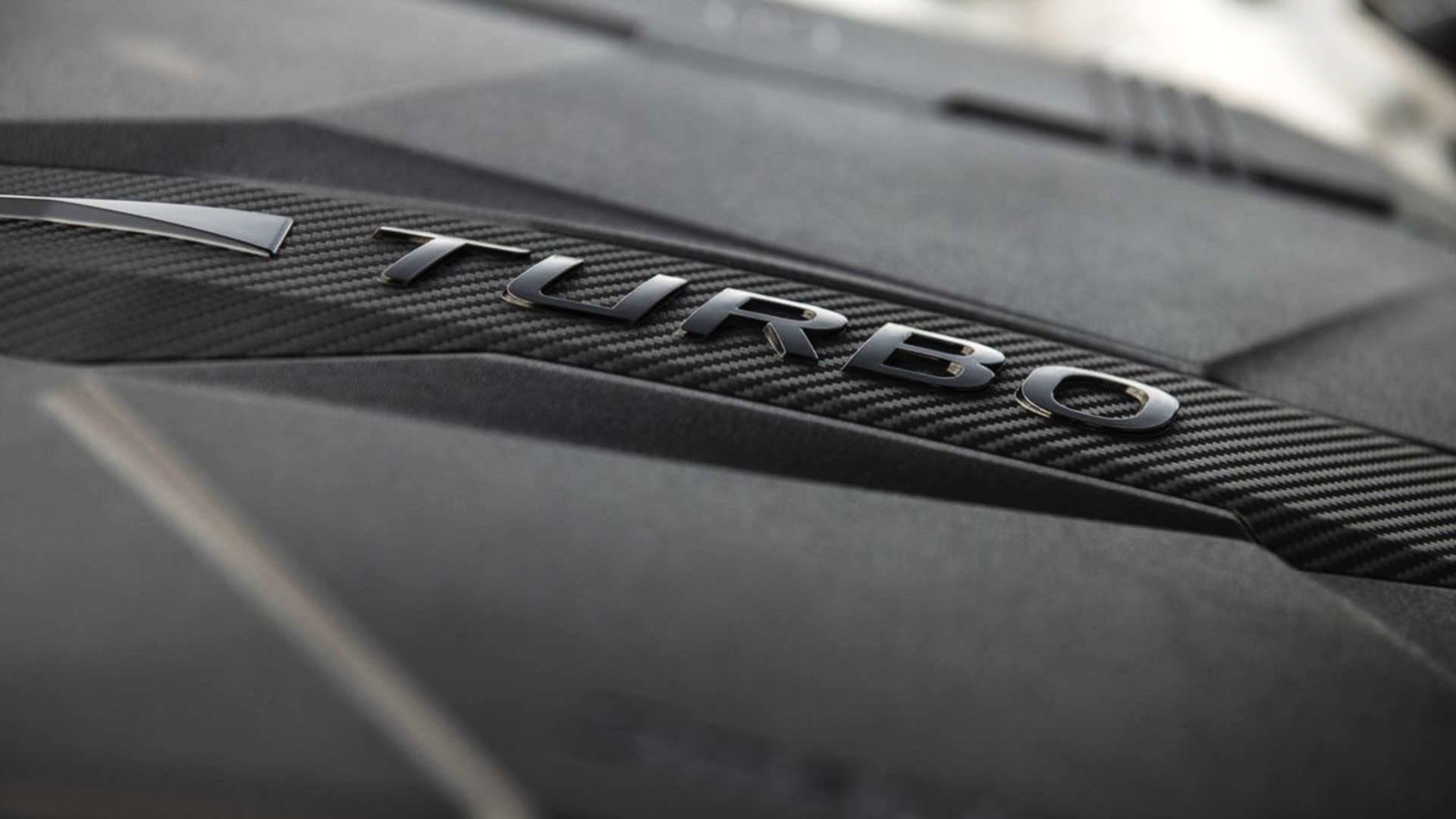
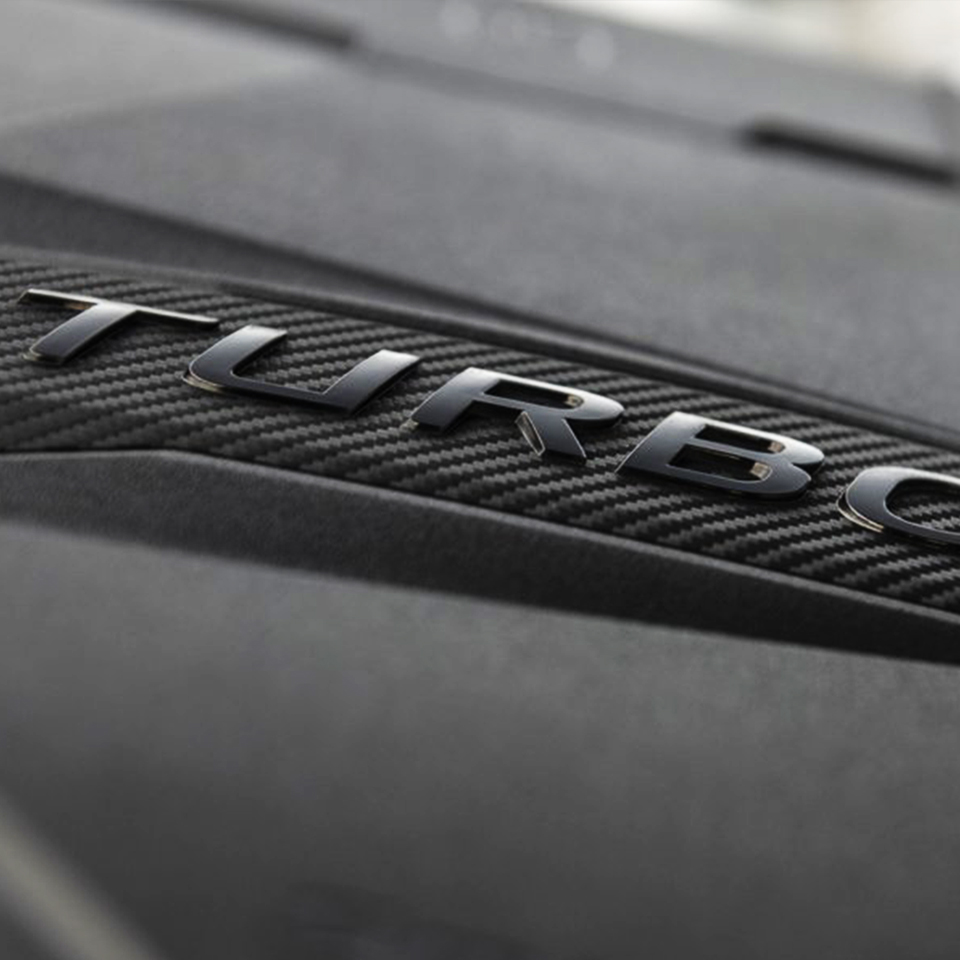


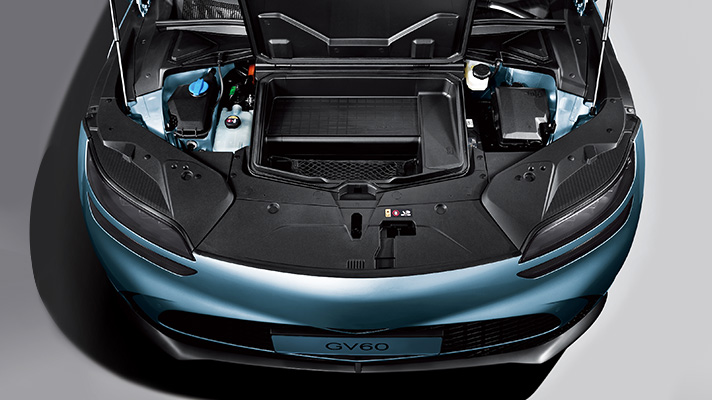
A car design determines the first impression of a car and reflects each owner's preferences. Recently, car design has been established as a key factor in determining vehicle selection. Looking at the ‘core purchase reasons for new car buyers in 2020’ surveyed by , exterior style and interior design ranked second and ninth, respectively. In particular, speaking of interior design, it has ranked up by 9 compared to 2019, highlighting the importance of a design once again. This would also mean that consumers started to value car design as the performance of automobiles has been generally improved in recent years.
As the value of automobile design increases and the standards of owners increase, the design is also evolving. Headlamps and taillamps, which in the past only functioned as lighting, have been recreated as glamorous design elements; The interior, which has been designed mainly for usability, is also maximizing its aesthetics these days. Recently, Hyundai Motor Group does not divide the design area into the exterior, interior, and CMF (Color Material Finish), and the group is carefully handling even inconspicuous areas. Even the area called the gray zone - the inner surface of the body, the joint of the door, the engine room, etc. - uses sophisticated designs for perfection.
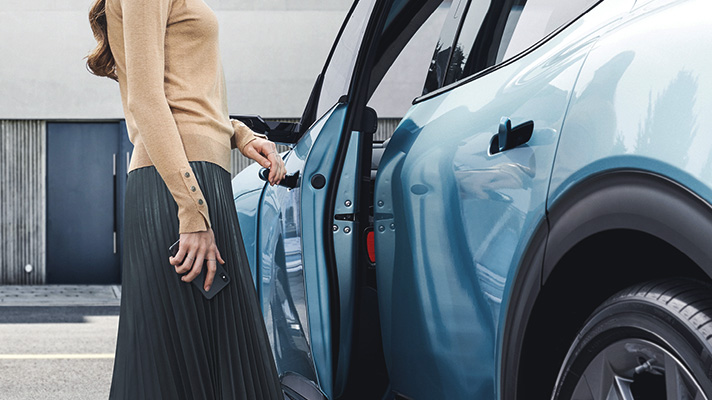
So, what exactly is Gray Zone design? The 'gray zone' refers to the design process between the engineering design and the whole body design. The expression "Gray Zone" also means a state between black and white. In other words, the gray zone is not easily noticed as a part of the interior of the vehicle, but it is revealed only when the door or hood is opened, or when the trim is removed and disassembled. The Gray Zone design implies the process of adding functional and aesthetic elements to this hidden area.
For reference, automotive design is generally divided into the exterior design, interior design, and CMF design. However, the gray zone design applies to all parts except for them - the underfloor constituting the body, various inner panels, engine room, engine body, intake/exhaust parts, junction block, luggage room, and even bolts and nuts for mounting car parts.
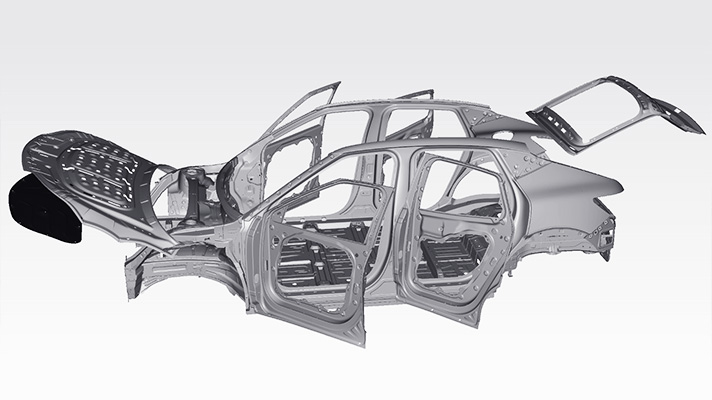
If you look at the BIW (Body in White) where the basic skeleton of the vehicle is exposed as it is, you can easily find the Gray Zone design. BIW refers to the state in which the frame and panel of the vehicle are assembled, and the underfloor, fenders, cross member, roof, door, trunk lid or tailgate inner panel, and various pillars that make up the body are exposed as they are. Therefore, if you look at the BIW, you can understand the functional structure of the car body, and you can easily find design elements that are hidden by various trims.
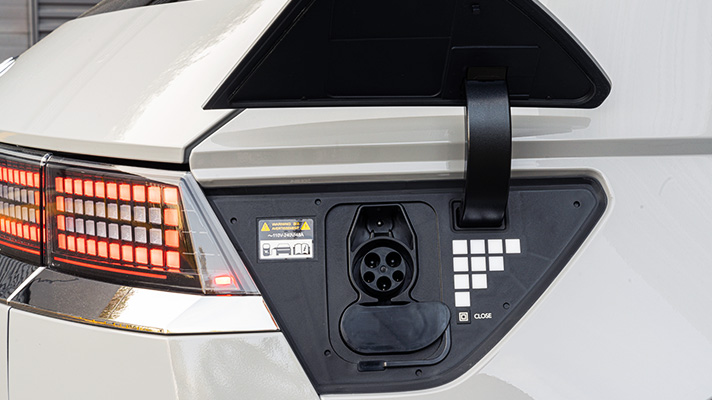
In addition, the gray zone design is used for the hood, door, and fuel port (charging port) that can be opened and closed. For example, certain areas - the engine room when the hood is opened, the areas when the door is opened, or the housing when the fuel or charging port door is opened - are usually hidden, but are periodically visible during maintenance or refueling. Therefore, a design that considers not only function but also aesthetics is important.
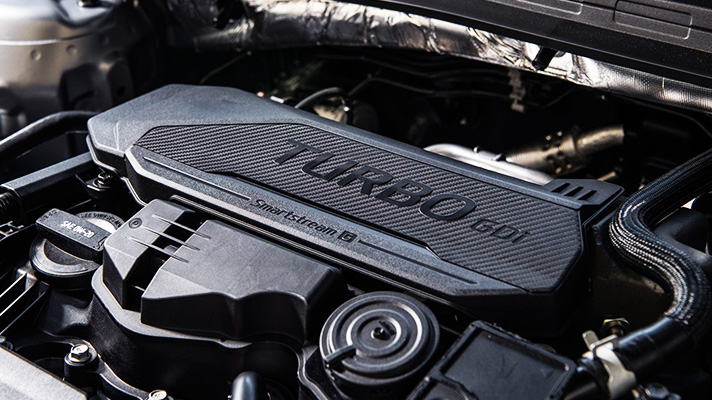
The latest Hyundai, Kia, and Genesis vehicles reflect the Gray Zone design, which adds perfection to even the smallest details. Speaking of the engine room, which can only be seen only when the hood is open, it shows the geometric image throughout the engine room while retaining the dynamism and functionality of the machine. The standardized cover design emphasizes harmony between parts, and by setting a delicate and robust concept as a theme, it expresses dynamism of the characteristics of each engine.
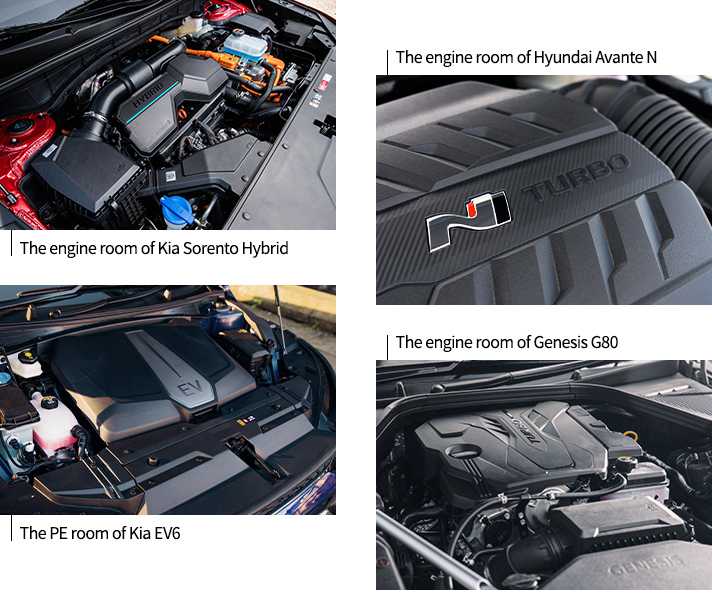
In addition, Hyundai Motor Group uses a unique concept for each brand in the engine room design. Hyundai and Kia emphasize a solid and functional image, and the IONIQ and EV's PE room, which consist of a dedicated electric vehicle lineup, have high-tech sensibility and an eco-friendly image. Hyundai's high-performance brand, N, uses a robust and dynamic image unique to high-performance cars, and the engine room of Genesis gives the luxurious sensibility of a premium brand.
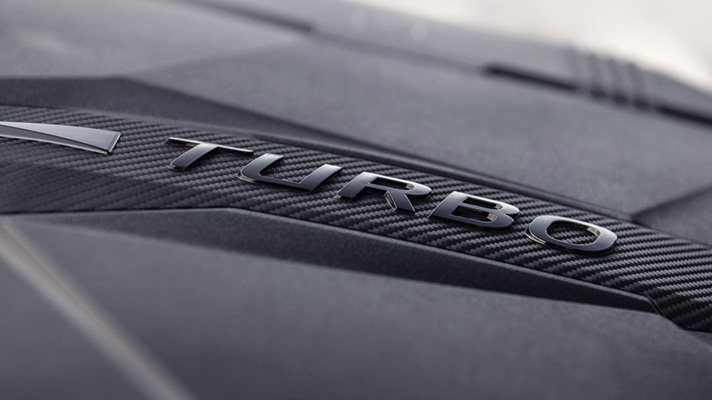
The engine cover design that houses each engine's characteristics also becomes an important design element. The engine room of the Hyundai Motor Group brand expresses a concise form that is focused on functionality. Overall, it has a simple structure using a consistent design, and the engine cover emphasizes the seamless connection with surrounding parts. Also, the unique surface treatment indicates the characteristics of the engine. The engine cover of the Sonata N-line, the signature high-performance model of Sonata, emphasizes its strong engine performance and the mechanical image by adding a carbon pattern and three-dimensional TURBO lettering.
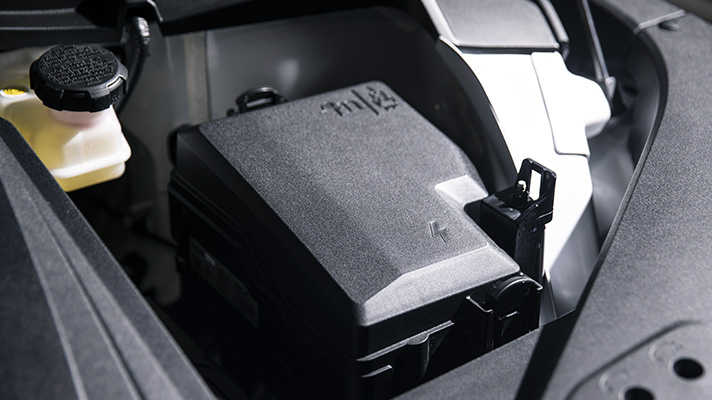
Although the engine room design concept pursued by each brand is slightly different, there are also general design elements to enhance the overall perfection - for example, part surface treatment design, warning label graphic, cap/gauge, battery, and various pictogram designs. These common parts focus on standardization so that customers can intuitively understand the functions.
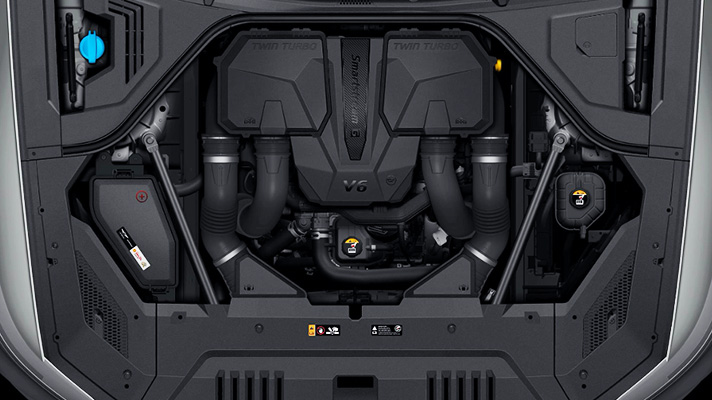
The engine room of the Hyundai Motor Group brand, which has evolved over time, is highly praised in the market - especially in auto magazines and influencer reviews. The Sonata received a comment saying, “The structure that considers maintainability stands out, and the engine cover design using a carbon pattern shows dynamism well.” In addition, they said that the Genesis GV70 "is very impressive that it has a neatly organized engine room configuration and a dynamic engine cover design.”
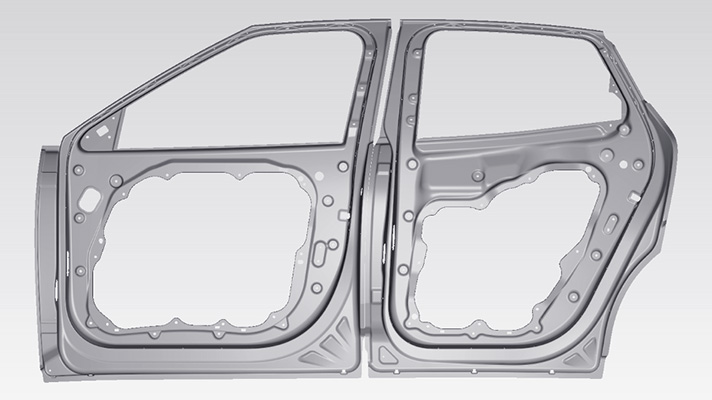
Meanwhile, the body, which has been designed with only functional parts in mind, has changed a lot. In the case of the Genesis GV60, the Gray Zone design elements all over the body highlight the brand identity of Genesis. The side outer sealing part - exposed when the vehicle door is opened - emphasizes a restrained volume with neatly arranged lines and surfaces, and the lower part of the B pillar not only shows a strong sense of SUVs but also prevents wrinkles that can occur during molding. In addition, for a beautiful door design, the shape of the front and rear door inner panels was unified and the internal structure was similarly adjusted for a sense of balance.
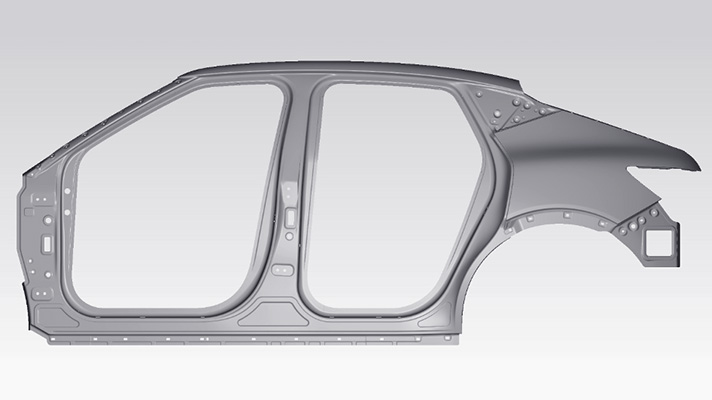
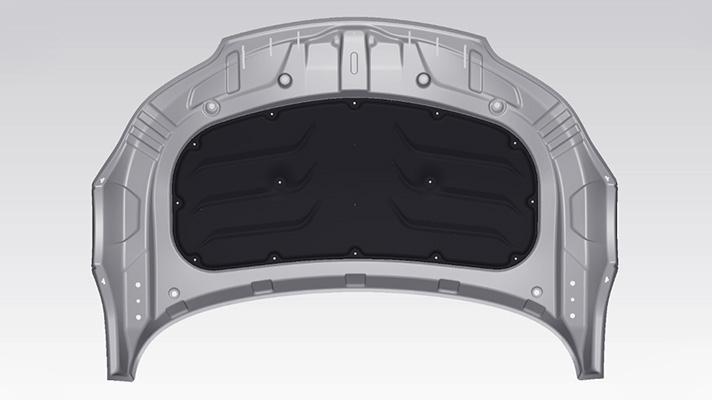
The hood inner panel - visible when the hood is opened - also shows the unique Gray Zone design. The vehicle's hood uses rigid foam to maintain its shape and secure rigidity. In addition, a sense of proportion was created on the inner folds of the hood panel and the number of folds was optimized to create a visually harmonious interior of the hood. The insulation pad that blocks engine noise also expresses the unique dynamism of Genesis by adding details with three-dimensional lines.
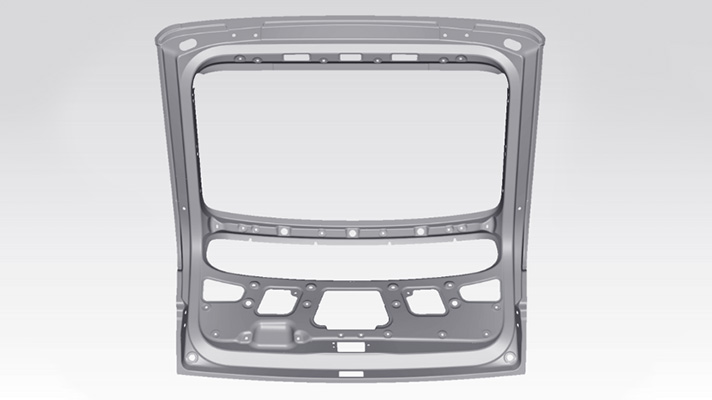
The tailgate inner panel focuses on improving the quality of the surface - the plane - to create a more perfect finish when the trunk is opened; It was carefully tuned to have a unified formative image by seamlessly connecting multiple surfaces, which are often made based on function.
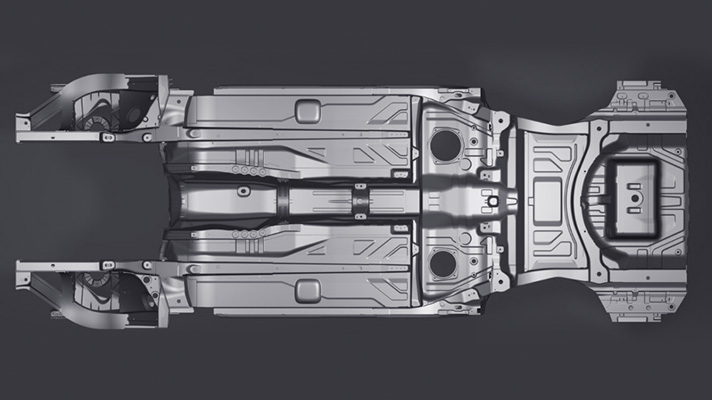
The underfloor is the most inconspicuous part of the gray zone. The underfloor is composed of the front, center, and rear floors depending on the location. Since the function, purpose, and molding conditions of each part are different, it is the most difficult part to secure unity. However, in the case of the Genesis G80, based on a simple and solid concept, it was designed to harmonize the pattern or the characteristics of the form. In addition, a sense of speed was created with a geometric shape, and the dynamic image of the Genesis brand was emphasized through the harmony of functionality and aesthetics. In addition, the beauty of balance expressed through the division of surfaces and the location of figures also becomes a characteristic of the G80 underfloor.
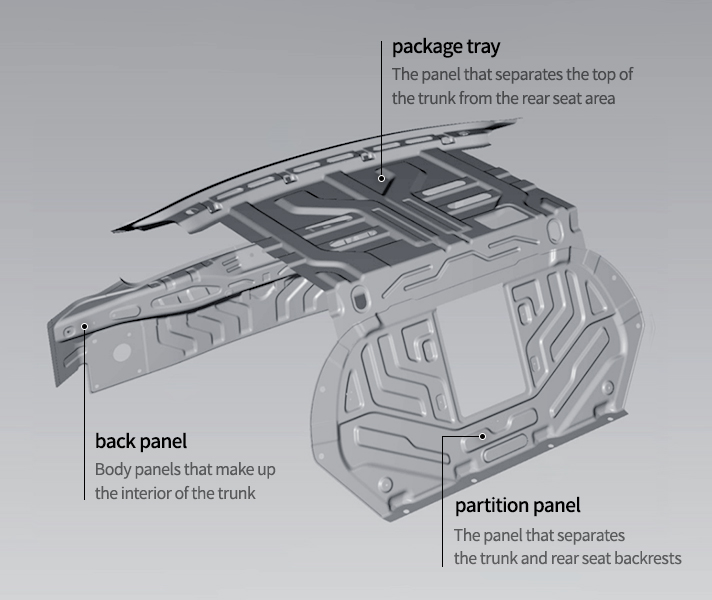
The gray zone design is also applied to the various body parts that make up the rear seats and the trunk area. The package tray, back panel, and partition panel form a geometric pattern using the same formative features as the underfloor, and the shape of the pattern harmonizes with the underfloor. The completed BIW exudes unique beauty with a sense of visual unity and rhythm.
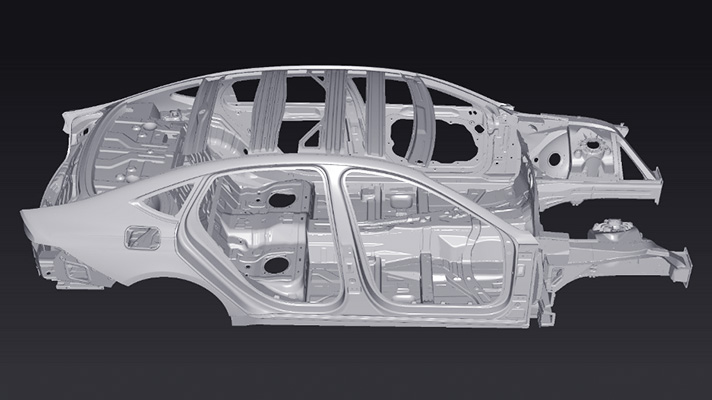
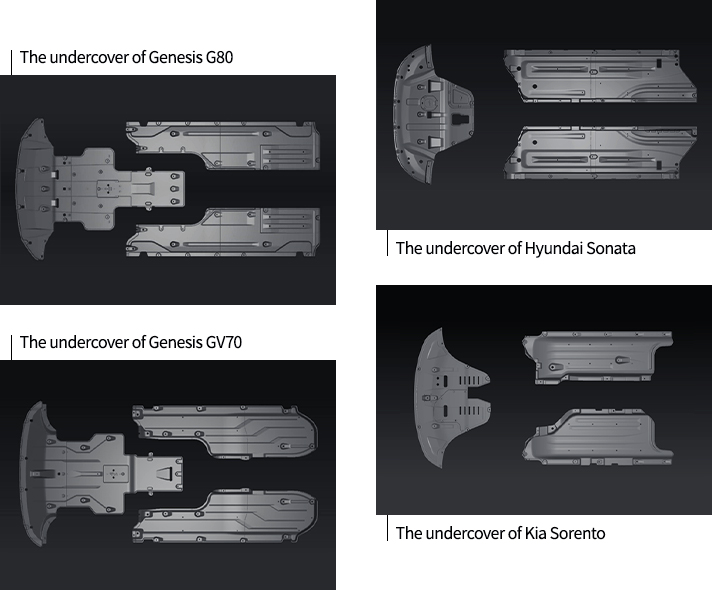
The undercover - installed to improve the aerodynamics of the vehicle and protect the undercarriage of the vehicle - is also in the gray zone. The undercover design was created for the injection stiffness, cooling performance, and aerodynamics, according to the characteristics of the material. The shape of the bead has been designed to be simple so that the airflow is smooth and the brand's characteristics are revealed; Above all, the automaker focused on functional shaping for cooling and stiffness.
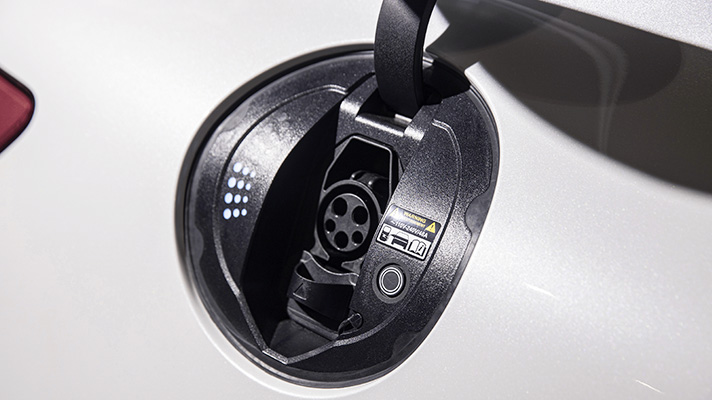
The unique charging port of the GV60 contains the simple and high-tech atmosphere unique to electric vehicles. The charging port door buttons are arranged neatly like the latest cool electronic products, and the mechanical elements are unified in a circular graphic to give a sense of stability. In addition, the delightful yet intuitive design of the graphic lighting that informs the vehicle's battery status stands out.
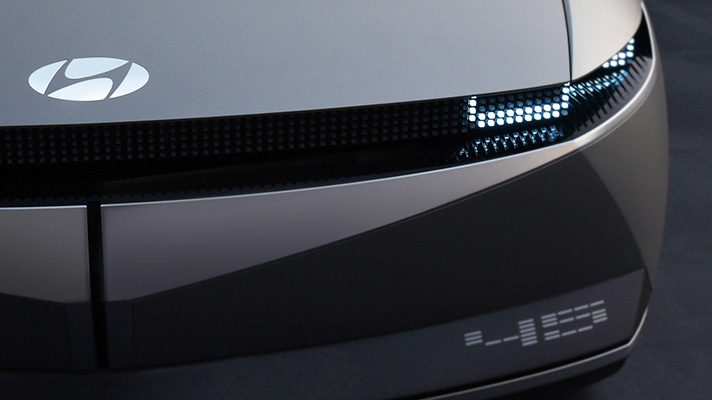
The Gray Zone design, which is delicately used even in invisible parts, is a feature that can be found not only in Genesis but also in Hyundai and Kia models. Usually, it's okay to design just functionally for the hidden parts; However, Hyundai Motor Group improved the level of perfection by using neat finishes and aesthetic design elements throughout the body.
The Gray Zone design has a great impact on customer satisfaction. For example, if a customer discovers a sophisticated design hidden in an emergency or maintenance event, this would build not only trust in the vehicle but also the brand's credibility. Therefore, the gray zone design has a great influence on brand satisfaction and is a part that needs to be dealt with very carefully in the design process. Cars with sophisticated designs - from the engine room to the inside of the body - allow you to experience the design philosophy pursued by the Hyundai Motor Group.
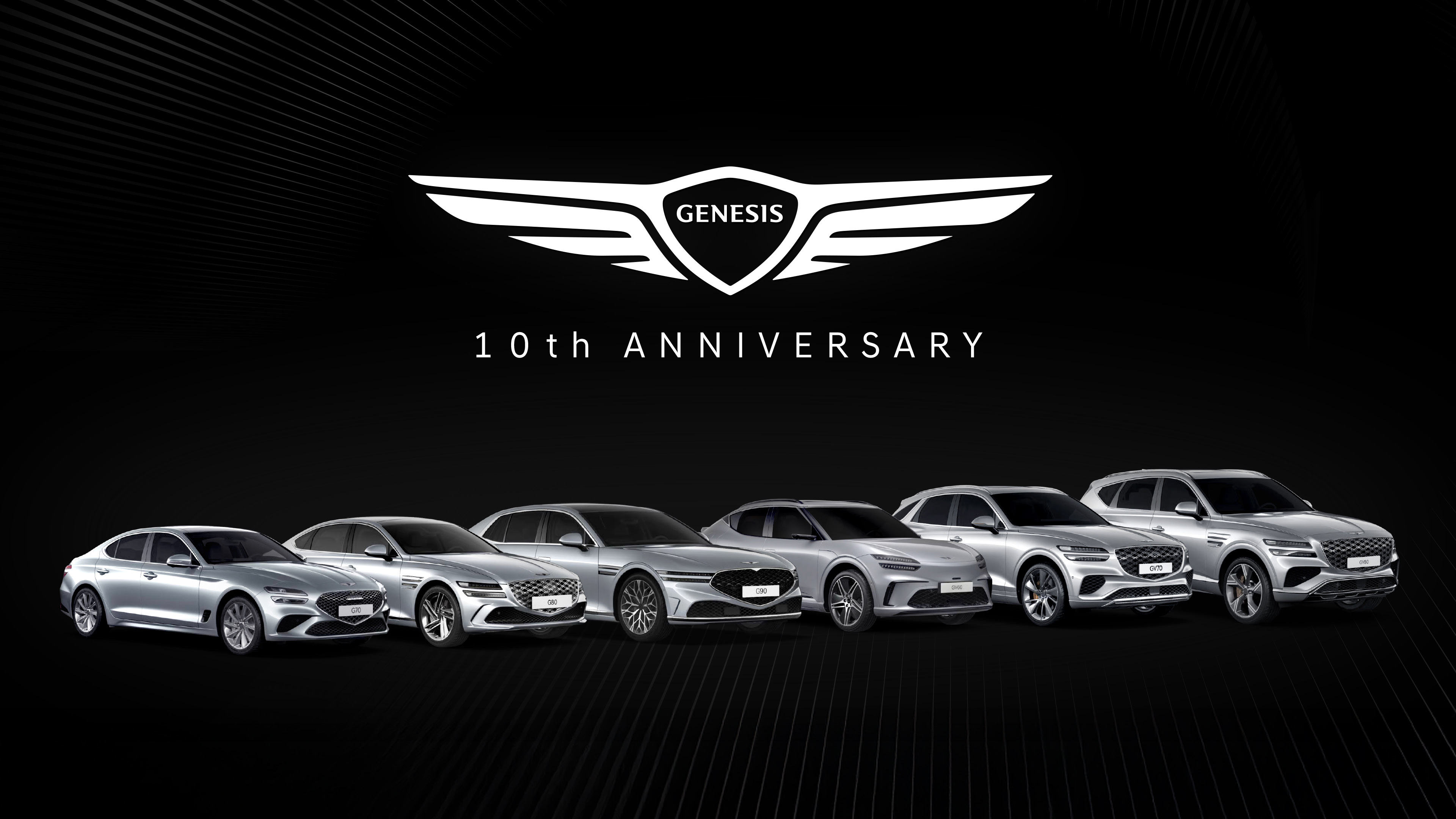
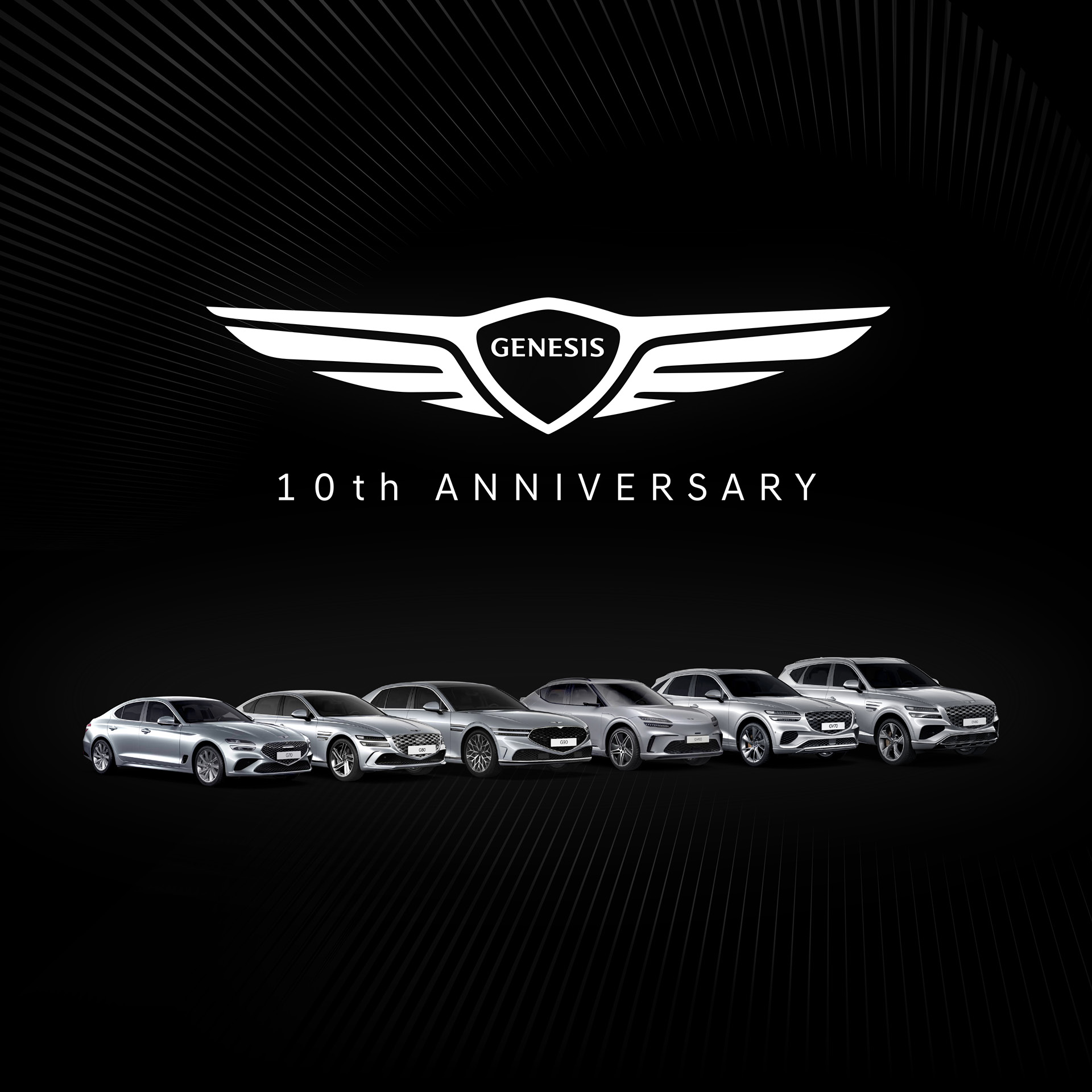
Ten Years of Genesis: A Journey Built Together
2025.11.27 12min read